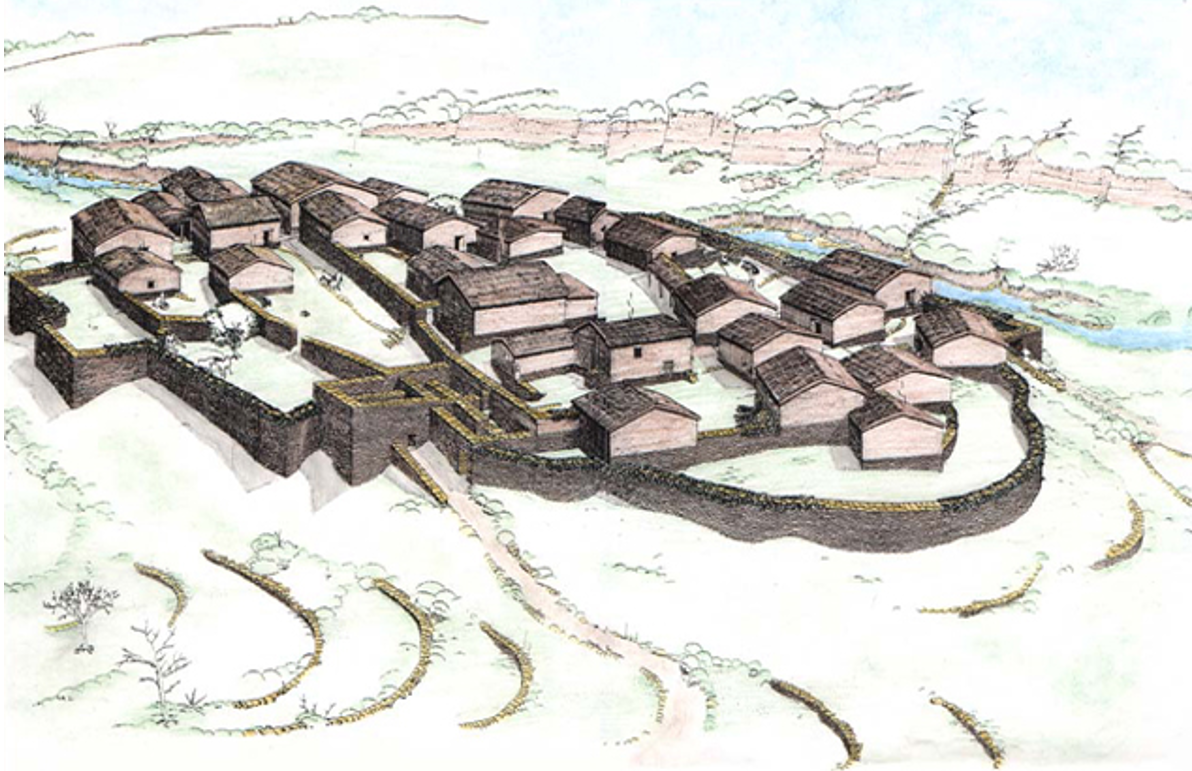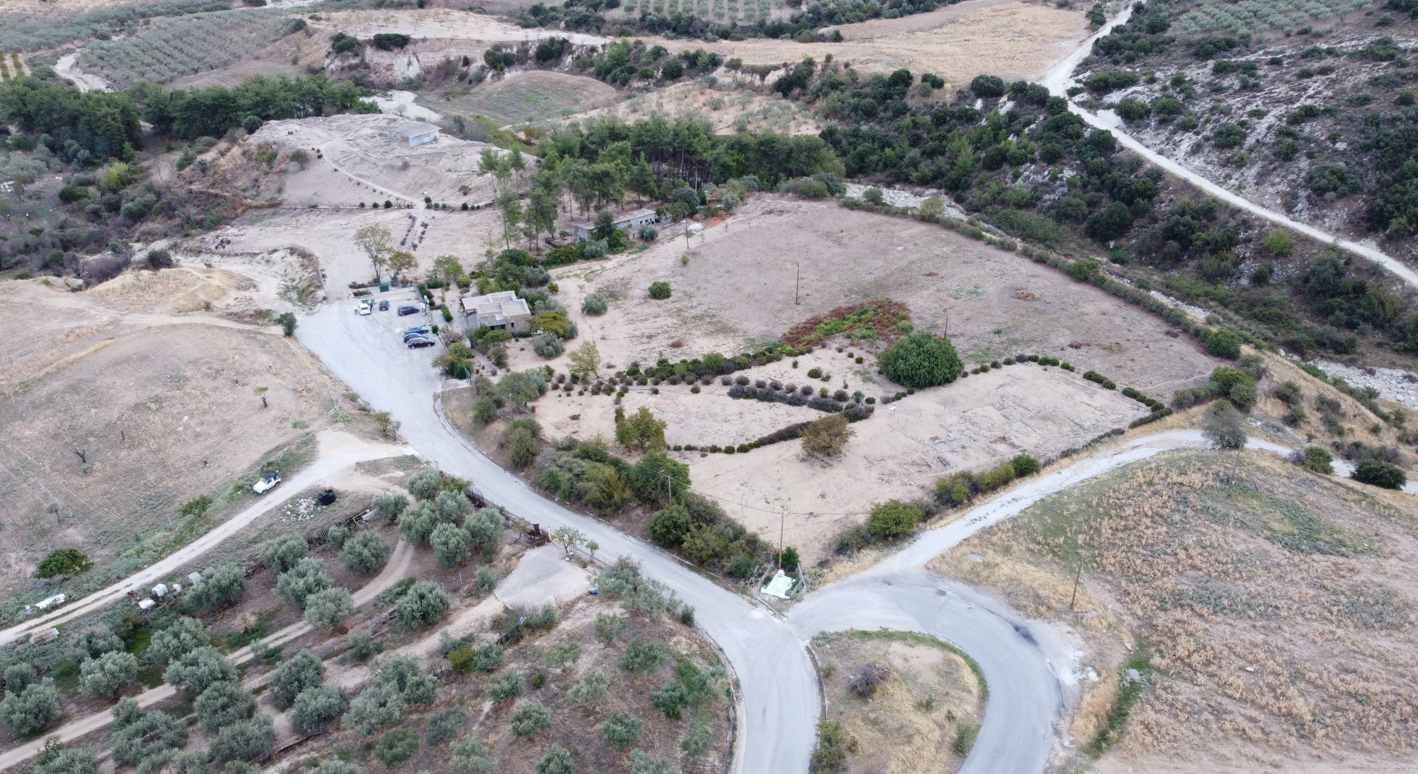One of the largest prehistoric settlements in Europe is located in Magnesia, Greece. Occupied for over five millennia, this site is a significant archaeological discovery.
In 1900, archaeologist Christos Tsountas uncovered one of the largest prehistoric settlements in Europe, providing evidence of a Neolithic civilization in Greece. The site is located in Thessaly, near the Pagasetic Gulf and Lake Karla. Later excavations, led by Professor Dimitris Theoharis, revealed that the settlement was larger than Tsountas had initially believed.
Among other findings, animal bones, blades made from flint and obsidian sourced from Milos, stone tools, and clay figurines were discovered. Source: Hellenic Ministry of Culture
Among the discoveries were animal bones, blades made of flint and obsidian from Milos, stone tools, and clay figurines. Source: Hellenic Ministry of Culture
The archaeological site of Sesklo in Thessaly is one of the oldest Neolithic settlements in Greece and Europe. It is situated on Kastraki Hill, near the village of Sesklo, and was inhabited from the early Neolithic period, around the 7th millennium BC, until the Middle Bronze Age, the 2nd millennium BC.
Its greatest development occurred during the 5th millennium BC, in the Middle Neolithic period. This era saw the rise of the "Sesklo culture," known for advancements in pottery construction and decoration.
The prehistoric settlement of Sesklo in Magnesia. Source: Hellenic Ministry of Culture
Sesklo is particularly important as it represents the earliest example of an organized settlement in Greece, featuring recognizable architecture and a clearly structured society. This makes it a milestone in architectural evolution.
The Prehistoric Settlement of Sesklo in Magnesia
Source: Hellenic Ministry of Culture
Sesklo is located 14 kilometers from Volos.
The settlement is named after the plant seskulo, which grows in the area. It developed on the "Kastraki" hill, covering an area of 100 acres. The region features deep ravines, hills, and arable land.
The first inhabitants settled there in the 7th millennium BC, engaging in agriculture and animal husbandry.
It is estimated that there were between 500 and 800 houses, constructed using various materials such as wood, mud bricks, and stones. Narrow alleys and squares surrounded by large walls were found between the houses.
Sesklo is located just 14 kilometers from Volos.
Today, only shallow pits, trenches, and the stone foundations of houses remain. The best-preserved buildings are "House 50" and the "Potter's House," which was destroyed by fire and named for the many vessels found inside.
Beneath the floors of the houses, tombs were discovered where inhabitants buried their dead in a curled position.
Sesklo was inhabited until the Middle Bronze Age and is considered one of the most significant Neolithic settlements in Europe.
The archaeological site of Sesklo spans around 40 acres and includes the remains of the Acropolis on Kastraki Hill (Sesklo A) and the settlement on the slope (Sesklo B). Most of the buildings were residential, constructed with stone foundations, mudbrick walls, wooden beams, and chimneys.
Surface Erosion Issues at the Settlement
Source: Hellenic Ministry of Culture
The settlement went through various phases of development (Sesklo C, D, and E) and was destroyed by fire at the end of the 5th millennium BC. However, during the Late Neolithic period, life continued on Kastraki Hill.
At the highest point of the hill, a "megaron" was built, an impressive structure that served as the center of the new settlement, surrounded by circular stone enclosures.
Inhabitation in the area continued until the Early and Middle Bronze Ages.
Surface erosion problem at the settlement. Source: Ministry of Culture.
Preservation Efforts by the Ministry of Culture
The Ministry of Culture is implementing a comprehensive plan to protect and promote the prehistoric settlement of Sesklo A and B in the Aisonia region of Magnesia. The project includes stabilizing archaeological findings, improving access to the site, and managing visitor traffic.
Additionally, flood control projects are planned to protect the settlement, which suffered significant damage from the 2023 wildfire and the Daniel storm. The project is funded with 10 million euros from the Hellenic Shipping Companies Union to the Ministry of Culture as part of the restoration efforts for monuments affected by the natural disaster.
The architectural study for the stabilization, restoration, and promotion of the ruins at the prehistoric settlement of Sesklo A and B played a central role in coordinating all related studies. Its goal was to develop solutions to protect the monuments, restore them, and highlight the archaeological site through subtle interventions that preserve its character while making it more accessible and understandable to visitors.
At Sesklo A, the proposal suggests maintaining the existing visitor path, which has been adapted to the topography of the area and the archaeological remains. For a better understanding of the site, visitors will be able to explore two main areas: the megaron area and the group of houses, providing a comprehensive view of the "Sesklo culture."
Moreover, at the Acropolis, it is proposed to remove the schist buildings erected in the 1970s and 1980s, as they often confuse visitors with the authentic archaeological remains. The new path will be wheelchair accessible, improving visitor access. Simultaneously, a trench will be constructed on the southern side to drain rainwater, and the existing path leading up to the southwestern part of the Acropolis will be removed.
Finally, conservation work will be carried out on the existing buildings, including the entrance, offices, and storage areas. In the external area of the main entrance, interventions will improve the road’s slope and manage rainwater in the final section.













